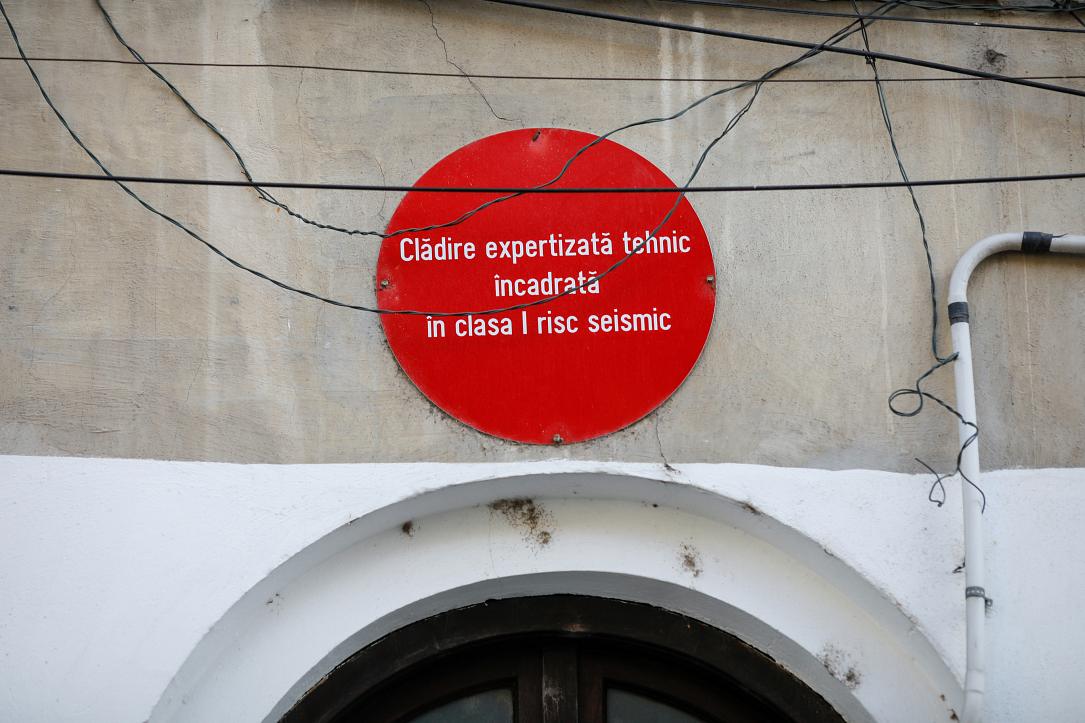Report: 1 in 4 Bucharest residents would be affected following a major earthquake



One in four Bucharest residents would be affected following a major earthquake, be it loss of life, loss of a relative or acquaintance, loss of shelter or job, and so on, according to estimates from the Department for Emergency Situations analyzed by the Bucharest Community Foundation. In this context, the non-profit launched the “Your CTRL Plan” campaign on March 1, which provides action models at a time when the devastating 1977 earthquake is being commemorated.
March 4 marks 47 years since the earthquake with a magnitude of 7.2 on the Richter scale, which occurred on March 4, 1977. Felt across Southeast Europe, the quake caused the greatest damage from a natural phenomenon in Romania's history: nationally, 1,578 people lost their lives (1,424 in Bucharest), and 11,321 people were injured (7,598 in Bucharest). Over 30 tall or medium-height buildings collapsed in Bucharest. Overall, roughly 200,000 people were affected directly, according to Digi24.
Romania is a country with high seismic potential, and an earthquake with a magnitude of 7 is possible at any time. The Vrancea seismic zone is the most active in the country, but in the past, strong earthquakes also occurred in the Black Sea. The strongest earthquake in Romania's history occurred in 1802, in the Vrancea zone, at a depth of 160 kilometers.
The Bucharest Community Foundation draws attention to the urgent need to put individual preparedness on the public agenda as a tool to increase the resilience of the Bucharest resident population to earthquakes. The Foundation proposes to popularize best practices for public preparedness and rescuer safety used in other earthquake-vulnerable countries.
By comparison, Istanbul has prepared more than 450,000 people with disaster response training. Italy’s Civil Protection Department has trained more than 400,000 people with volunteers over five years.
“We cannot expect that after the earthquake, after the golden hour has passed, the institutions will be working properly. There will be 100 organizations providing water and none providing biscuits, things will be almost the same. But less like the pandemic, and less like the Ukraine crisis. It will also happen in the case of the earthquake, it will also happen in Bucharest,” said Cosmina Simiean, head of the General Directorate of Social Assistance of the Municipality of Bucharest (DGASMB).
The campaign continues with a demonstration exercise in schools during the week of March 4-8. 20 schools in Bucharest will open their doors to trainers from the Association for Education, Development and Youth Involvement - E.D.I.T. who will instruct 2,000 students on the correct behavior before, during, and after an earthquake.
In the 5 years since its launch, the Bucharest Prepared program has reached almost 20,000 students, from kindergarten, primary school, to middle school and high school, teachers, and parents who have been informed on seismic risk.
“Every March 4, we remember the 1977 earthquake. We talk about it, get scared about what might happen, then quickly forget. With Bucharest Prepared, we invite Bucharest residents to look at the solutions we all have access to: the family plan, the emergency kit, and preparing their homes. Each of them could save our lives or those around us. We can make sense of our normal fear of disasters, as earthquake-prone populations all over the world do,” suggests Alina Kasprovschi, executive director of the Bucharest Community Foundation.
Romania’s capital, located in the Vrancea earthquake impact zone, with more than 1.7 million inhabitants, is among the European capitals with the highest disaster risk and is one of the top 10 cities in the world with the highest vulnerability to seismic risk, according to World Bank data. The conclusion is also influenced by the condition of buildings, with more than 23,000 residential buildings in Bucharest that could suffer serious damage in the next big earthquake and another 1,000 that could collapse, according to Bucharest’s 2022 Risk Analysis and Coverage Plan.
Another study conducted by IRES at the request of the National Union of Insurance and Reinsurance Companies in Romania, or UNSAR, reveals that more than half of Romanians are worried that an earthquake or fire could damage their home. Unfortunately, however, at the national level, only one in five homes are insured: in practice, only 20% of Romanians would benefit from the protection offered by a home insurance policy, compared to a European average of about 65%.
14 million Romanians live in areas of moderate or high seismic hazard, which means almost 70% of the population, according to data from the National Institute of Statistics.
"With about 7.6 million homes unprotected against unforeseen events, insuring homes in case of disaster must undoubtedly become a national priority, as well as an individual responsibility of every Romanian," stated Alexandru Ciuncan, President & CEO of UNSAR, cited in the press release.
Aside from that, all of Romania’s key state institutions are based in buildings at risk of earthquakes. The World Bank estimated in its 2019 study that in the event of a major earthquake, the economic losses in Bucharest - from people’s lives to destroyed buildings, from the ceasing of production to the provision of shelter and food for evacuees - would amount to more than EUR 10 billion, or 7% of GDP.
(Photo source: Cateyeperspective | Dreamstime.com)